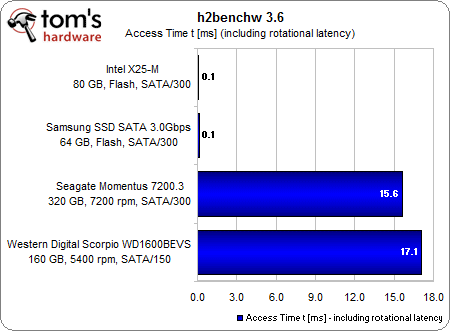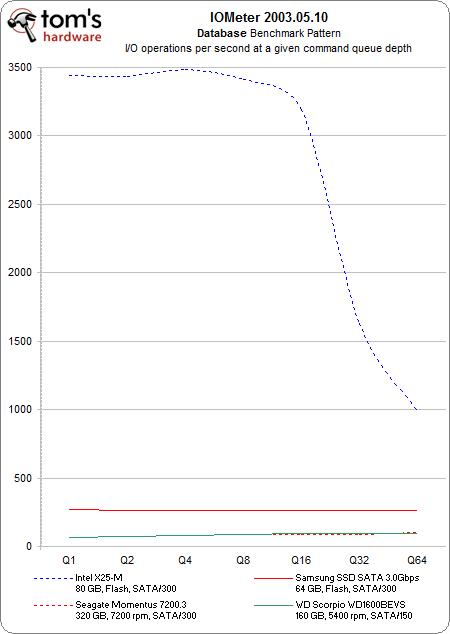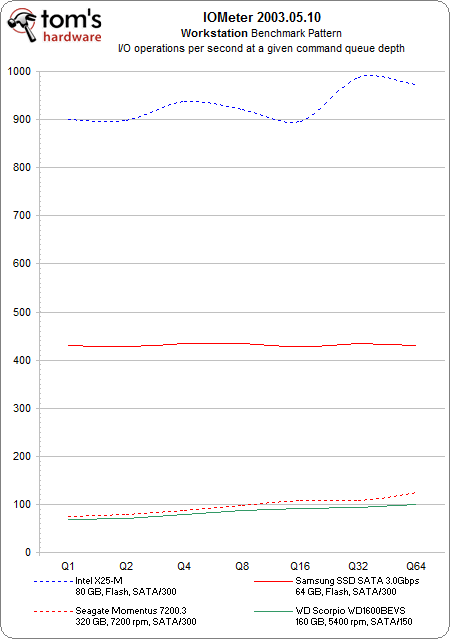Intel's X25-M Solid State Drive Reviewed
Access Time and I/O Performance
Intel’s 85 microseconds (0.085 milliseconds) might in fact be true ; our benchmarking tool stops at 0.1 ms and isn’t accurate enough. Clearly, both flash SSDs are extremely quick when it comes to random access.
As mentioned, the X25-M is the first SSD with NCQ. And the result is impressive : almost 3,500 I/O operations per second for typical database workloads is many times faster than Samsung’s 64 GB SATA-2 Flash SSD based on SLC flash memory. Clearly, Intel’s smart controller with 10-channel MLC flash is doing an excellent job. However, large command queue depths of 64 commands cannot be handled by the drive anymore, and it starts showing its limits.
The results are similar for the file server benchmark profile, but the gap between the hard drives at the bottom, the Samsung SSD in the middle and the new Intel drive on top isn’t as large as on the database profile.
Web servers only require regular read operations, and they mostly include small files. In this scenario, the difference between SLC and MLC flash is small, although the Intel flash controller is obviously doing its job. It cannot beat Samsung for individual block requests, but once two or more commands are pending, the 10-channel design is superior again. However, drives such as the Mtron 7500 Pro still provide better performance, at around 8,000 I/O operations per second for Web servers.
Once again, I/O performance is impressive, this time in the workstation scenario. Intel’s X25-M is almost twice as fast as the Samsung 64 GB SATA-2 SLC SSD.
The I/O tests were performed on our storage reference test system. Please refer to the test setup page for details.
Get Tom's Hardware's best news and in-depth reviews, straight to your inbox.
Current page: Access Time and I/O Performance
Prev Page Transfer Performance and Diagram Next Page PCMark Application Performance



